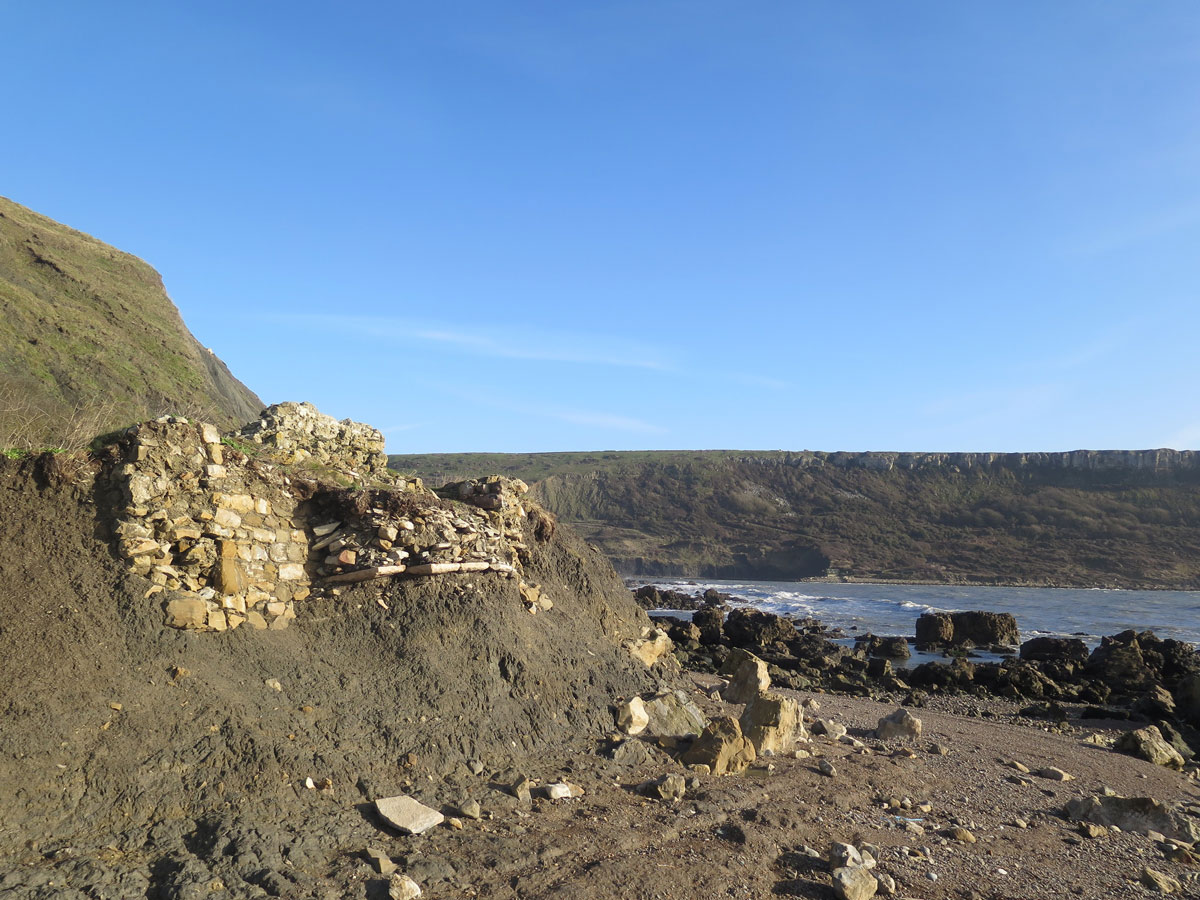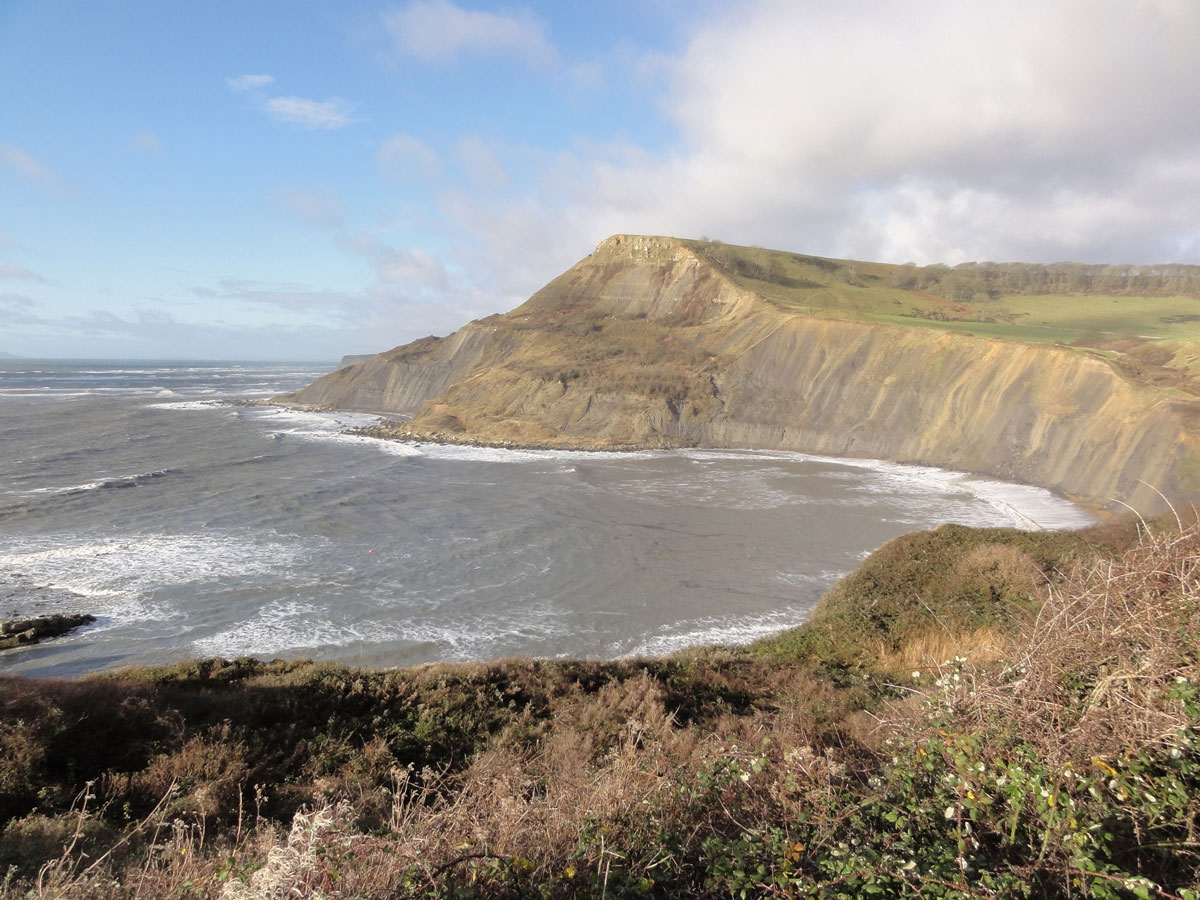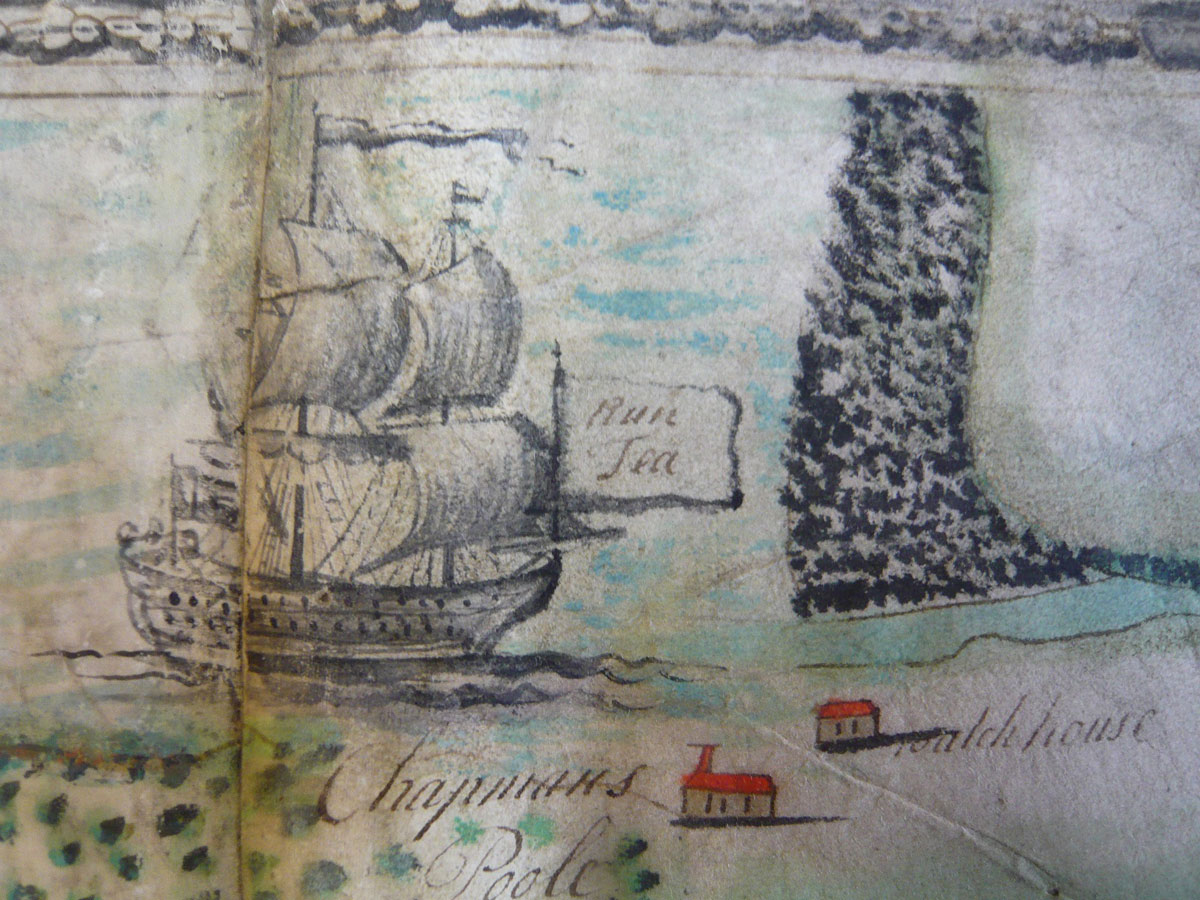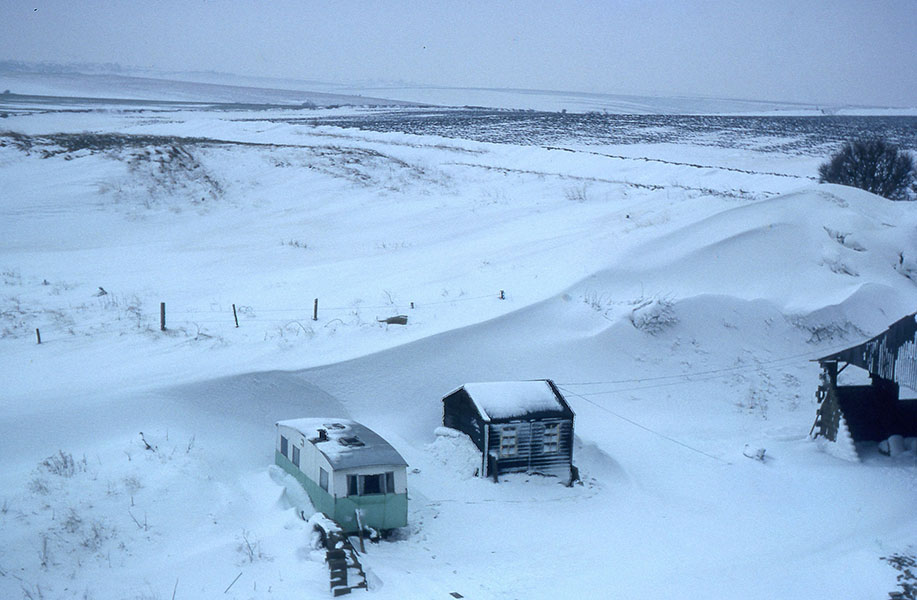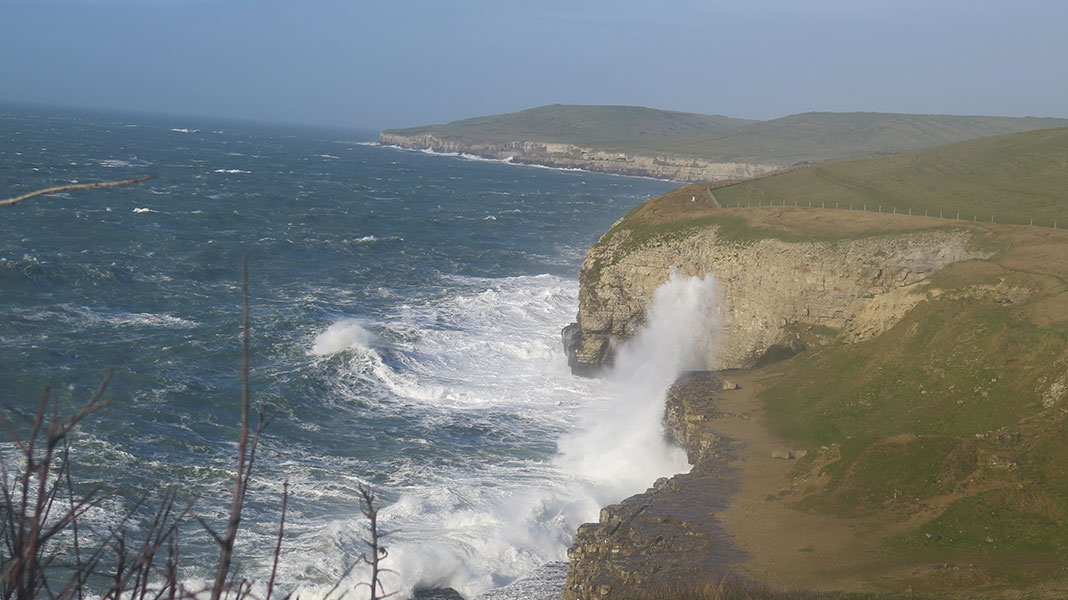35. Powder House
34. A Pierless Bottom
December 17, 2020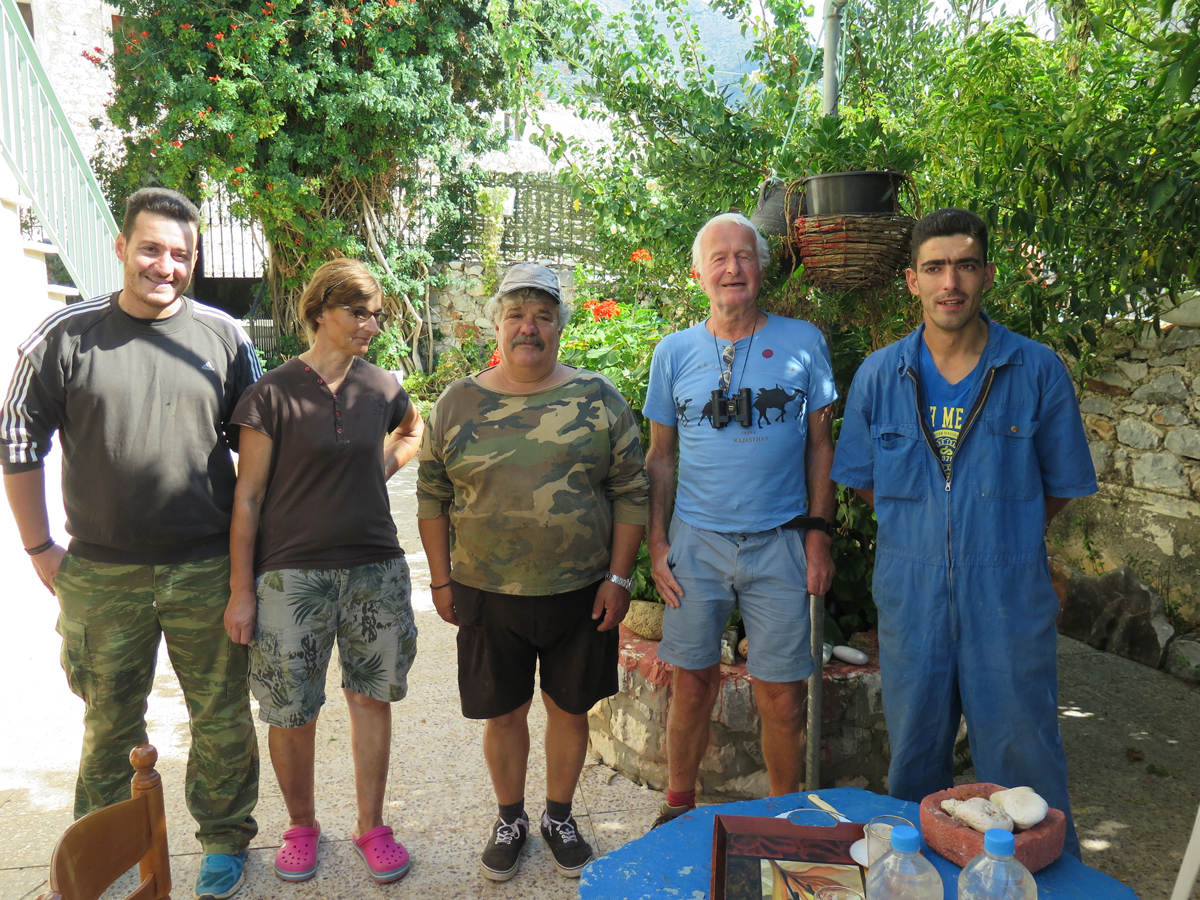
36. Mani – The End Of Europe 1
December 31, 2020(Purbeck map with Blog 15)
W hen walking over the rocky shore between Chapmans Pool, a rounded bay cut back into the shale cliff, and the waterfall at Freshwater, a small rectangular ruin on a low bank used to provide slight shelter against strong westerlies, somewhere to stop and eat sandwiches. Alan Lander, who fished out of Chapmans Pool, referred to it as Powder House. Researching the Dorchester archives (now The Dorset History Centre) in 2003 while writing Purbeck Revealed, I found several 18th century maps which marked a 'Battery' at that point of the coast. It would have been well-posed to control access to Chapmans Pool.
That battery first features on a 1765 map; few earlier maps mark such details. Perhaps it was originally one of the coastal strongpoints set up by Henry VIII when he was alarmed by the anger building up in Catholic Europe against his anti-papal stand, by hostile stirrings in Spain. The little bank on which it stood is fast retreating, leaving only one complete wall of Powder House.
In the 1790s, as the French Revolutionary War developed into the Napoleonic War, the British set about repairing defences against invasion.The philanthropic Encombe squire, Morton Pitt was included in the group of local gentry appointed to report on and repair Purbeck's preparedness. Perhaps little remained of the structure when they examined it; probably Morton Pitt, living at Encombe close by, volunteered to restore it, which probably entailed complete rebuilding. The floor is tiled with tooled stone paving and beneath one of the paviers Charlie Newman discovered part of a broken white clay pipe of the type so common at the turn of that century, indicating its being paved – or repaved – as part of those 1796 repairs. Today, the last paviers are falling onto the shore. An ever-active sea will soon smooth away all traces of the chisel but, as pieces of worked Purbeck stone dug a mile or two away, they will remain evidence of man.
Of the little rectangle of masonry some four metres long with a stone-tiled pitched roof Powder House was originally the store of the battery, once holding gunpowder, hence the name. Today, only one long wall remains with, on its inner side, a low stone shelf, perhaps a seat and the stubs of vanished end walls. The mortar along the top of the wall was shaped to accommodate that pent roof but there were never any stone tiles there in our lifetime. A lockable door, probably set in the missing long wall, would have protected the stores, which might have included some dry food, spare arms and ammunition for a couple of men manning it in times of threat. All four walls stood when we were kids but I have forgotten the details. Not long ago among the rocks nearby I found a 37 cm length of flattened, pointed steel with a broken right-angle phlange at its blunt end which might have been a bayonet. Certainly, the size was right. Were it a bayonet then a whole story opens up to explain how it came to be there, came to be lost. Others, less romantic, dismiss it as a tent peg. Whatever the origin, it currently functions as my poker.
The battery's restoration involved equiping it with an 18th century cannon. There is a sketch, drawn in 1829 attributed to the ex-Lord Chancellor, Lord Eldon, who lived at Encombe. It shows a low crescent of wall with the unmounted cannon lying on its side in the foreground. As long as it was functioning, this cannon must have been mounted and mobile enough to be moved towards a target. But the war finished in 1815 so the image shows it in times of peace and also five years after the Great Storm, which might have shifted it from its mounting. The artist probably sat against Powder House as he drew since no trace of it intrudes on the picture - just the gun, the wall and the coast to the west.
The cannon must have a history. Was it left from the wreck of The Halsewell? Her 26 guns lay on the sea bed not far away on the other side of St Aldhelms Head. Those heavy guns would not move from the wreck site on their own account. One cannon was noticed by divers in the 1950s and there were two more along Purbeck's south coast when we were boys, one of which used to lie amongst stone scars at Hedbury (we would always rebury it). This has since been mounted on a stone base. Hedbury is only a mile from the wreck site. They say the quarrymen once used it to fire an iron bar at a marauding French privateer. Until 1960, when someone took it for scrap, the other cannon stood upright at the mouth of Pier Bottom. It might have been the battery gun shifted there via the pier when peace made it redundant. But there are conflicting conjectures – after all, if the pier succumbed in The Great Storm, it wouldn't have been there to handle it! There were two other guns set up at Peveril Point's battery to protect Swanage Bay also attributed to the Halsewell wreck. In the late 18th century the technology for searching underwater was developing. Four years before the Halsewell disaster, a pioneer, Charles Spalding had used a diving bell to recover iron and brass guns from The Royal George, sunk off Spithead. Soon afterwards, Spalding suffocated in his diving bell. The East India Company raised guns and some copper from the Halsewell wreck site.
Was the battery involved in the control of smuggling? To avoid high duties in Britain, smuggling from France was a major trade well into the 19th century. Spirits and tea were heavily taxed. A humorous cartographer, knowing of an illicit trade through Chapmans Pool, added a flag labelled 'Rum, Tea' to ship decorating his 1737 map. In the 1830s the construction of a row of coastguard cottages may have rendered the battery redundant. Its fate was all downhill from there.

